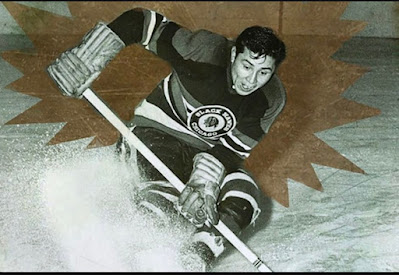Fred Sasakamoose begins his biography with the story of his ancestors who lived on the land before first contact. He tells of how their leader, Ahtahkakoop, was manipulated into signing treaties that were never kept. In many ways this pattern of lies and deceit is not a new story, but Sasakamoose makes it personal as he leads into how his family ended up on the small reserve of Sandy Lake.
Growing up, his mother was in charge of the family much of the time because his father was away logging or trapping to make a living. Fred was one of eleven children but only five survived due to smallpox. Their lives were constricted and limited by the local White Indian Agent and federal laws.
"we were poor, that's the truth, But I didn't know that.
What I knew what that home was full of song, dance and tradition. It was full of wonder and mystery. It was full of family, love and community."
When his Moosum, Alexan (grandfather) came to stay with them, they became close. Alexan got Sasakamoose his first pair of skates and introduced him to the game. He learned to skate on a frozen lake. Alexan carved him a stick. He used it with a frozen cow patty as a puck.
In 1941, when he was almost seven years old, he was taken from his parents and sent to residential school. St Michaels was more of a work colony than a school. He endured terrible abuses by priests and older boys. One of the priests, Father Roussel, was a hockey fanatic and organized the boys into a team. Sasakamoose may have developed as a hockey player there, but he left scarred. The only real victory at that institution was surviving.
He barely returned home when he was visited by Father Roussel and George Vogan who wanted him to come and play hockey for the Moose Jaw Canucks in the Western Canadian Junior Hockey League. His mother encouraged him to go. In Moose Jaw he lived with George and his supportive family for three years. George became his father away from home. While he worked and played hockey, he improved, build skills and developed confidence. Throughout it all he had to deal with the racism of a few teammates and the team's fans.He was called up to play with the Chicago Blackhawks during the 1953-54 season. He was the first Treaty Indigenous player in professional hockey. He played against legends like Gordie Howe, Jean Beliveau, and Maurice Richard. Up until that year, he never drank. He acquired a taste for alcohol while partying with his teammates. The following summer he drank too much and got out of shape. The next year he was cut from the team. Over the next couple of years he played hockey for the New Westminster Royals, Chicoutimi Sagueneens, and the Calgary Stampeders. During those years he met and married Loretta Isbister. Having no idea if he would ever play for Chicago again, and tired of being homesick, he decided to quit hockey and go home.
He might have given up on hockey, but it hadn't given up on him.
The owner of the Kamloops Chiefs tracked him down. He wanted Sasakamoose on his team. It was an amateur league, but it payed decent money so he and Loretta moved there. Fred went on to play with a senior league, the Saskatoon Quakers later on. For the next decade or so he continued to play on local teams during the winter to make extra cash for Loretta and his growing family.Enjoy this video from https://www.sportsnet.ca/.


No comments:
Post a Comment